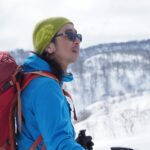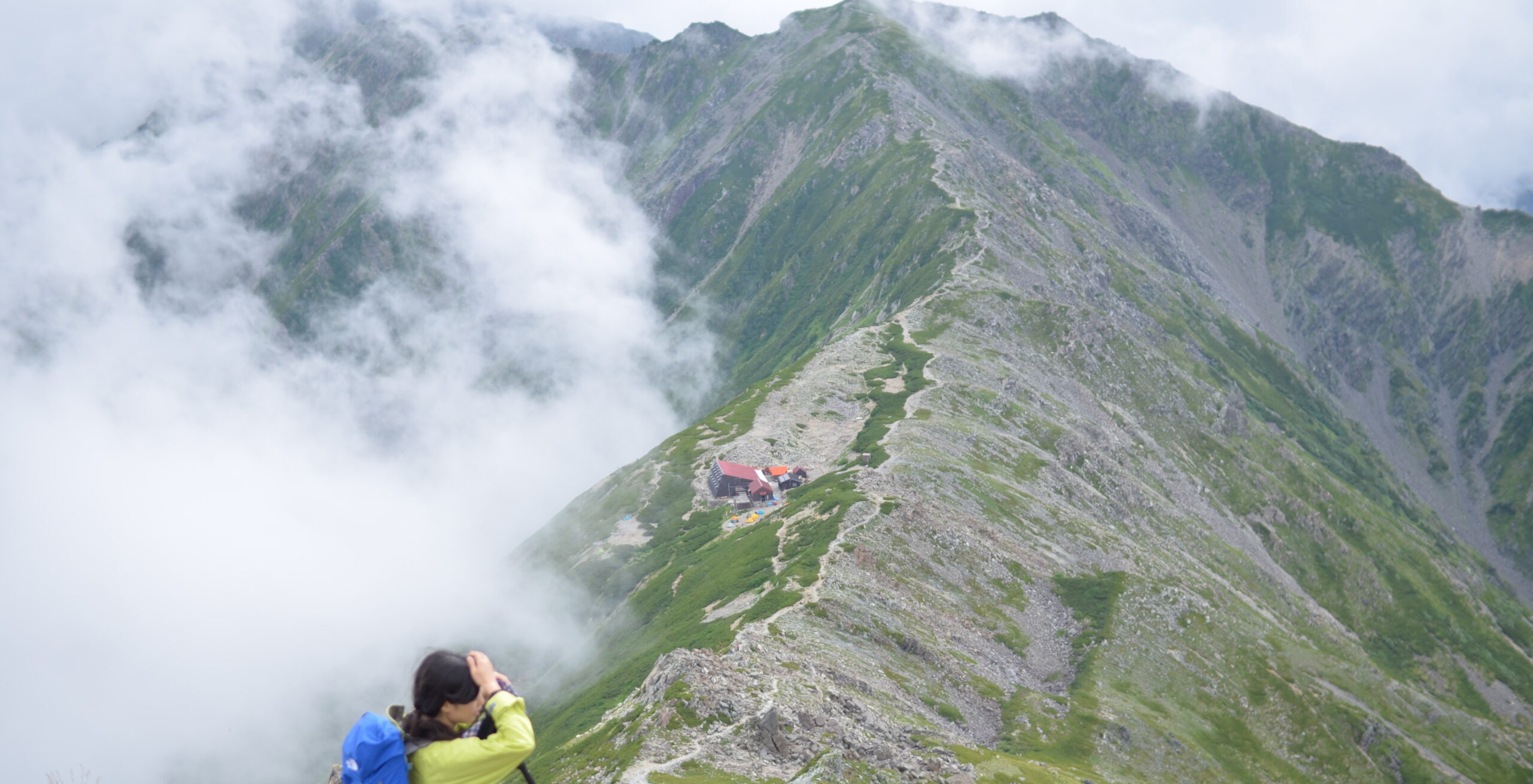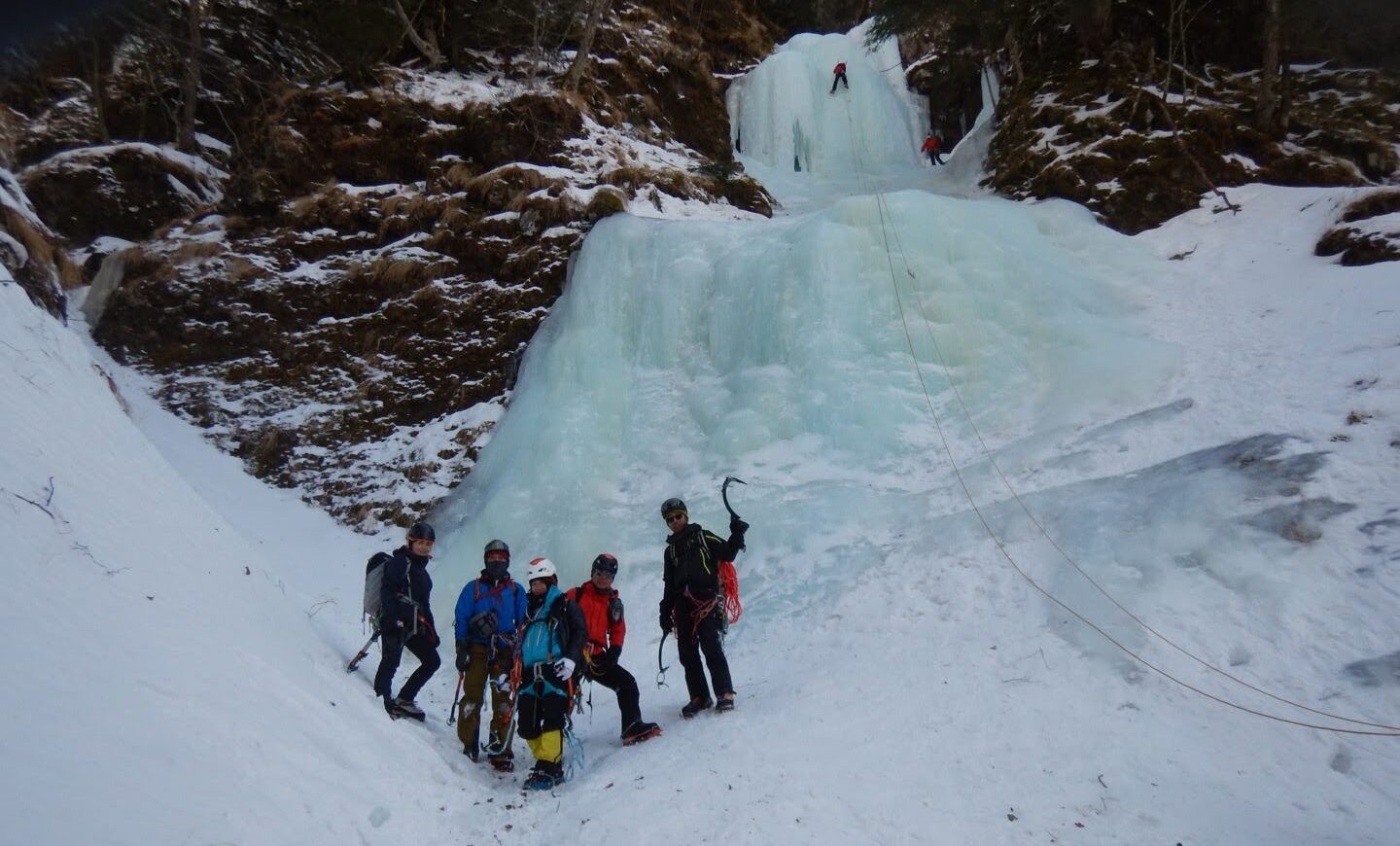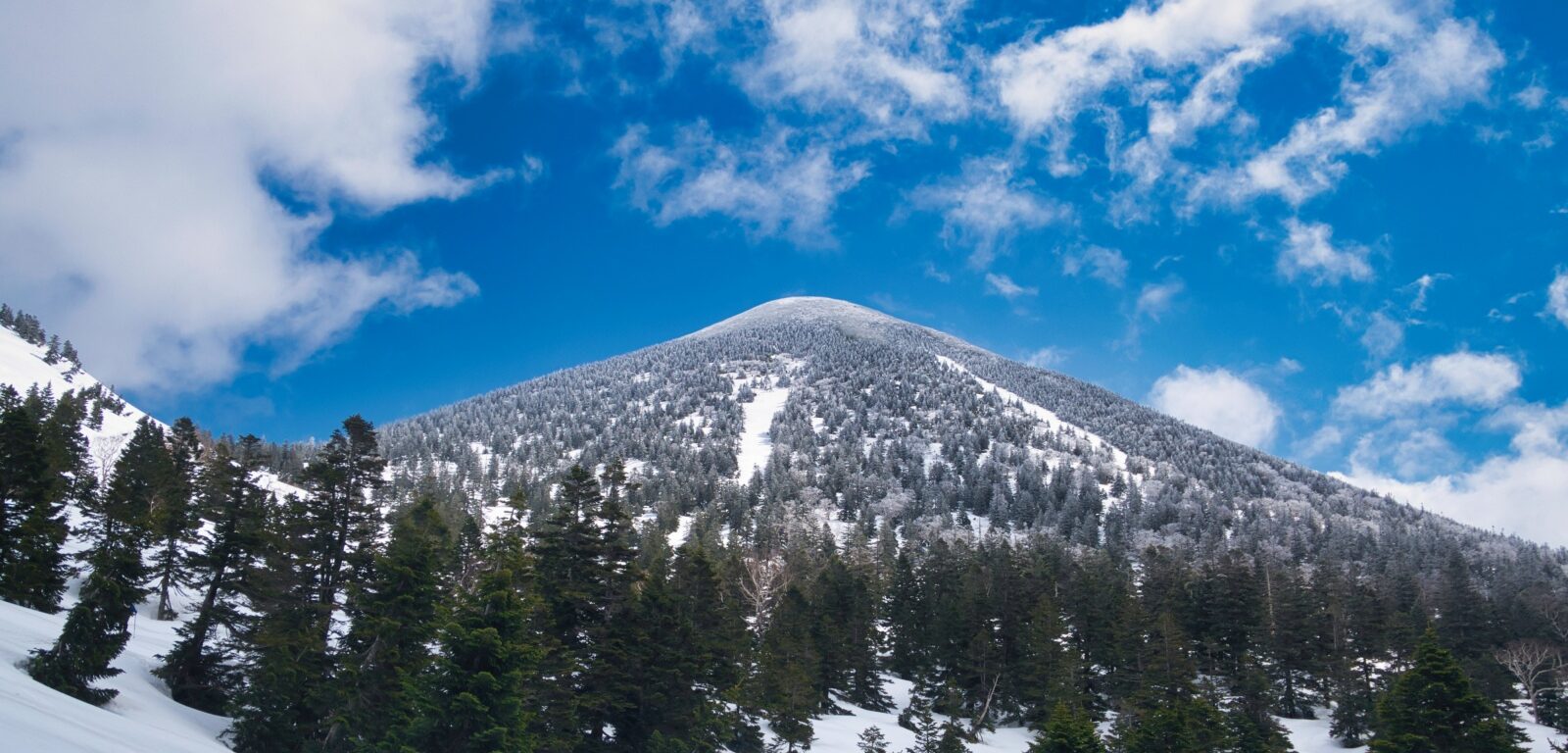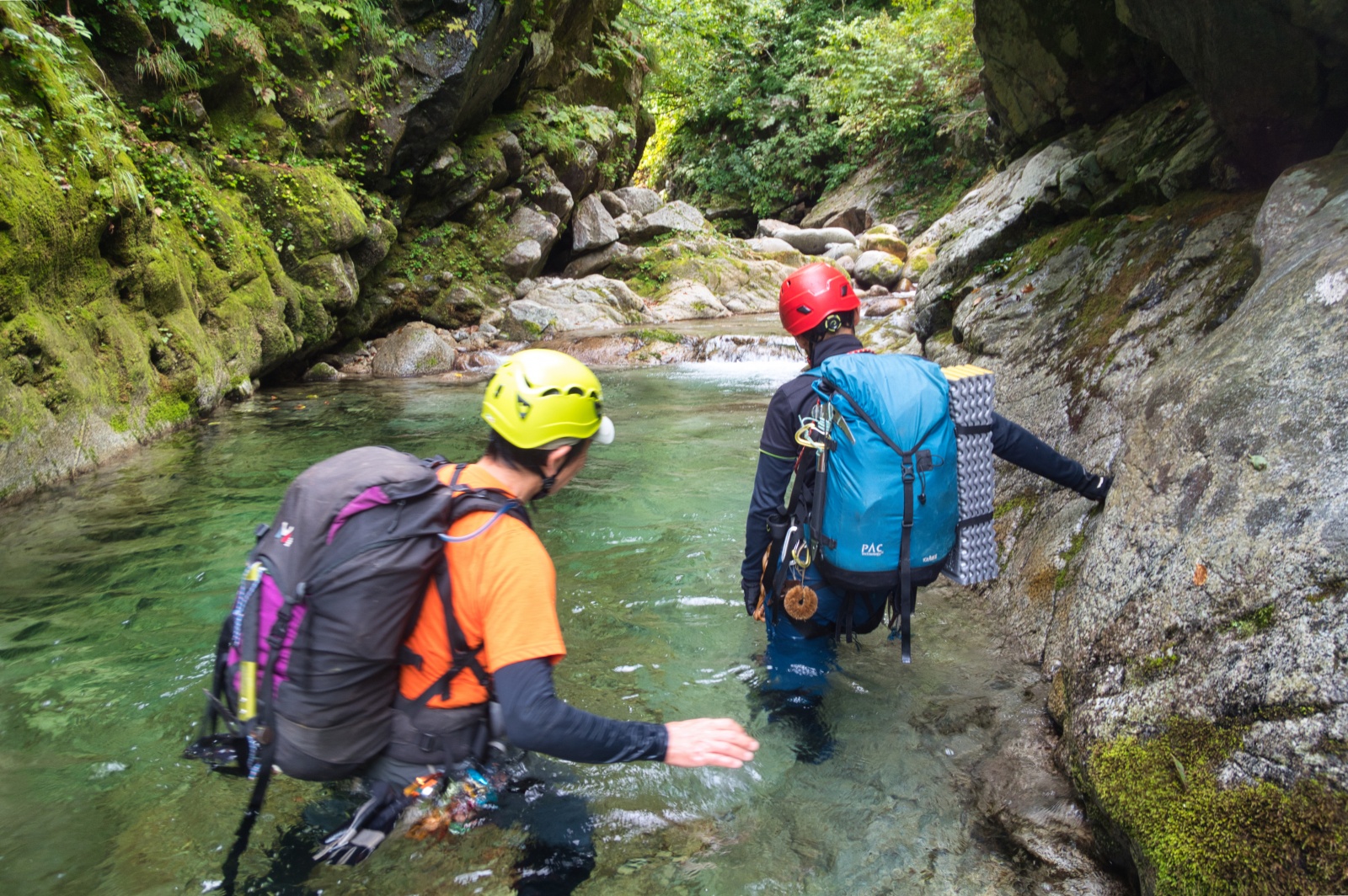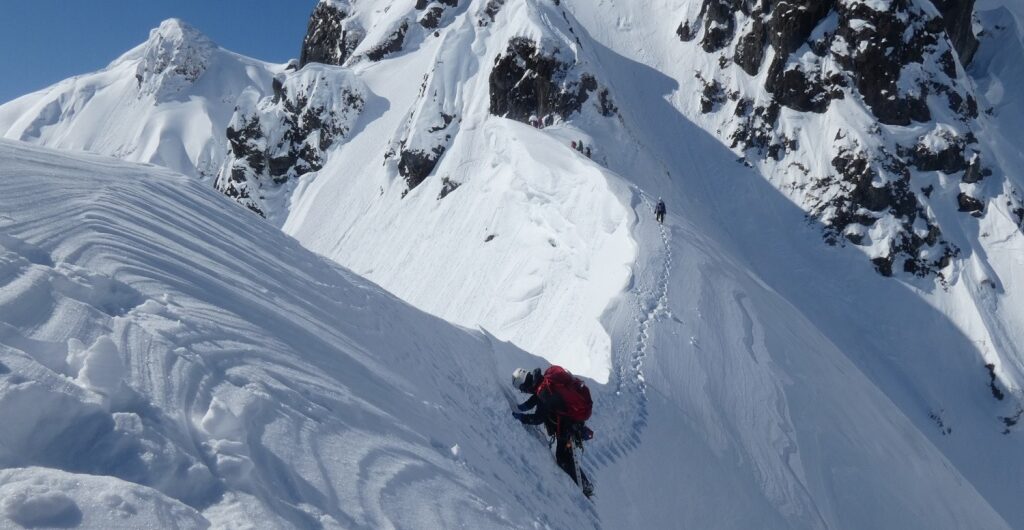【Deep Dive Chronicle】Eboshi Rock Left Ridge: Self-Reliance on Ogawayama’s Granite Spine
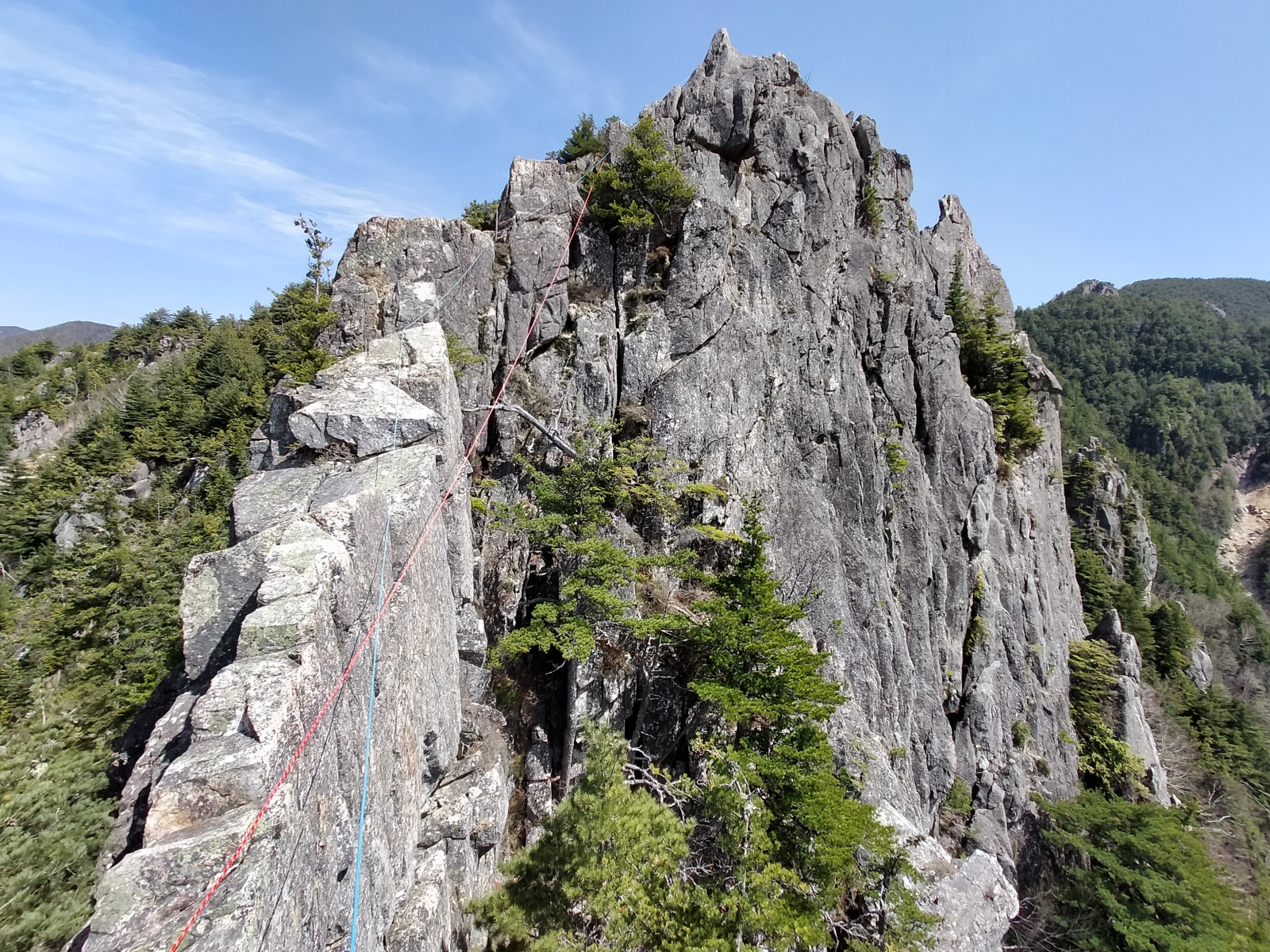
In early May, Ogawayama—nestled between Shinshū and Kōshū—bathed in the quiet light of fresh greenery. This chronicle documents a day’s challenge on the Left Ridge of Eboshi Rock (Eboshi-iwa), one of the mountain’s most iconic granite formations. My climbing partner W and I, a team of two, sought the unique tension and liberation that rock faces offer. On this long granite ridge, we pursued a trial of self-reliance demanding both technical precision and mental focus.
目次
Part I: Approach to the Rock Mass and Rising Anticipation
Dawn at Mawarime-daira
On the morning of May 5th, Mawarime-daira Campground lay shrouded in the pre-dawn chill. Though fatigue from previous expeditions lingered, our bodies surged with anticipation for the rock ahead. As morning sun filtered through the beech forest, W and I quietly shouldered our packs and set off toward Eboshi Rock.
Ogawayama, often called “Japan’s Yosemite” for its exceptional granite walls, is a sacred pilgrimage site for climbers. This mountain area hosts hundreds of climbing routes, from free climbing lines to long alpine-style multi-pitch climbs. Among them, Eboshi Rock stands as the symbol of Ogawayama—its granite face hard, sheer, and vertical.
The Left Ridge we aimed for is an extensive route linking multiple pitches, demanding continuous engagement with the rock for as long as weather and stamina permit. The motivation for this climb lay in its self-reliance. Unlike maintained indoor walls, here we must identify our own route and finishing points, secure our own safety, and deepen our dialogue with the rock. I believe this is true mountaineering training, connecting directly to alpine climbing and stream climbing (sawanobori).
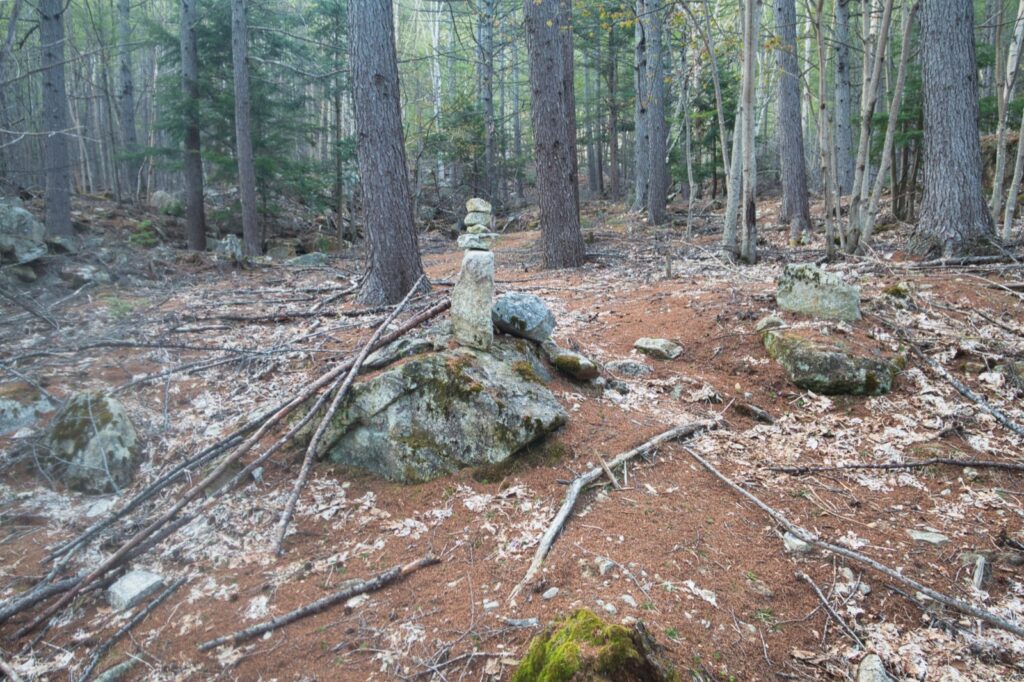
Air at the Base
Following the well-marked trail from the campground, we approached the base of Eboshi Rock. As the wall loomed before us, its sheer mass overwhelmed. Cairns marked the way, and after scrambling up the scree while gazing up at the imposing rock, we soon reached its base. Ahead of us, other climbers were already visible, heightening the tension.
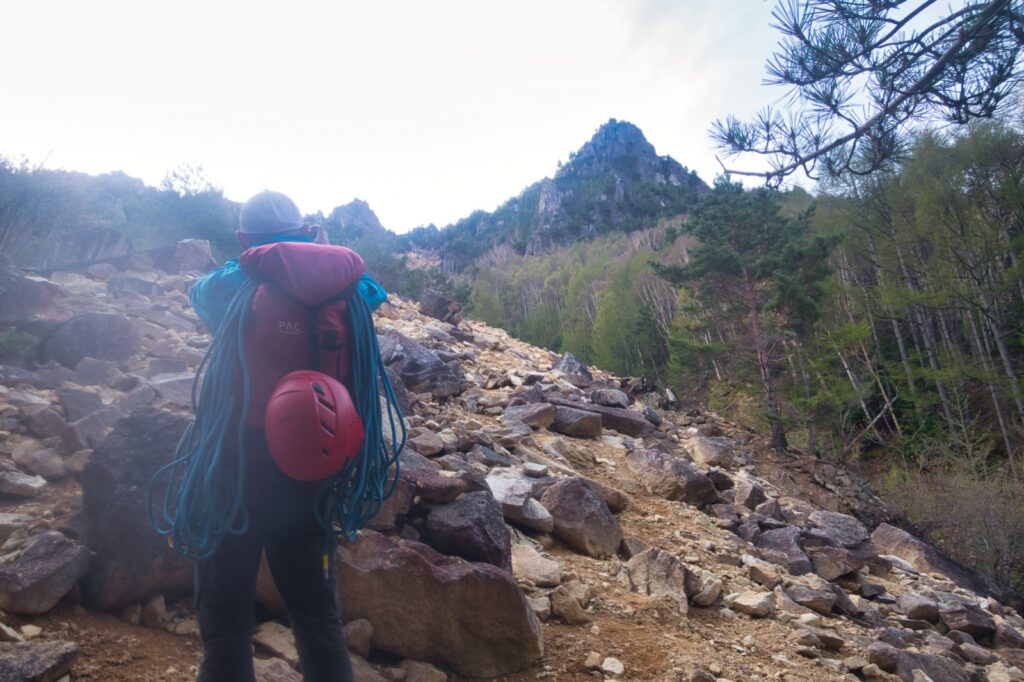
We donned harnesses and clipped on climbing gear—cams, nuts. The weight of the equipment seemed to foreshadow the weight of the trial ahead. The first pitch began at a dihedral (5.6). This felt like a greeting, exploring our distance from the rock. But when I led the second pitch’s crack (5.7), I felt my fingertips merge with the rock’s fine texture. Where stream climbing is a battle against cold water and slippery moss, this May ascent was an act of trusting the friction of dry granite. The mountain breeze through new greenery was pleasant, but inside my body, the flame of concentration had already ignited.
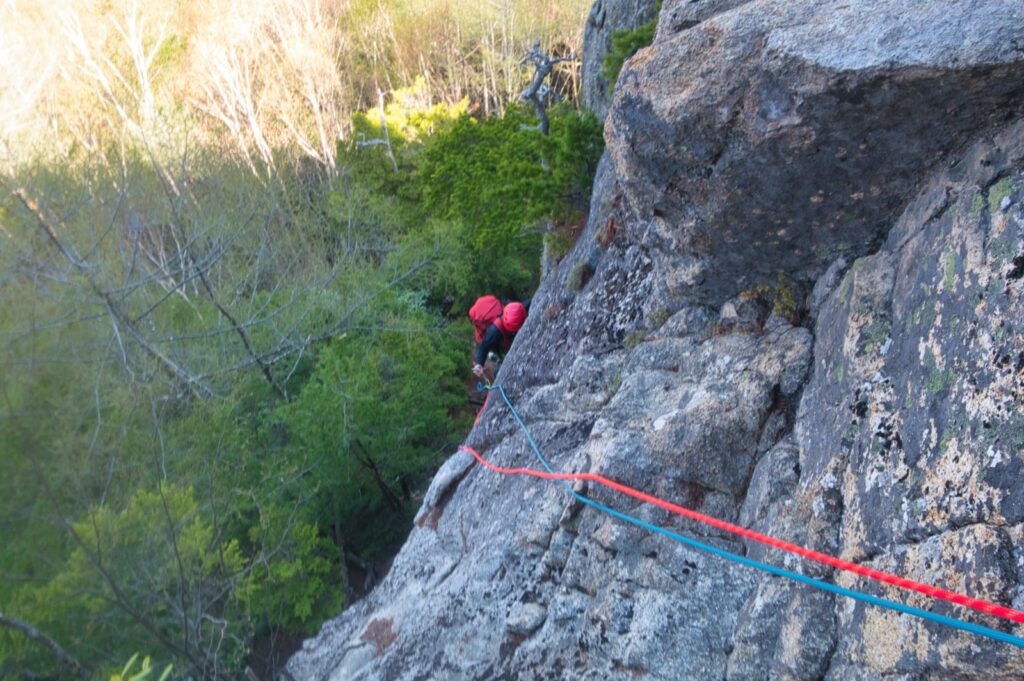
Part II: Technical and Mental Trials on Every Axis
Early Challenges
The route carved easy cracks at times, luring us upward. The third pitch (5.6) passed smoothly as a follower, but the fourth pitch (5.8) brought one of the cruxes. This route ascending directly above Ihai-iwa (Mortuary Tablet Rock) had one nasty move. In that tense moment where the slightest weight-shift error could prove fatal, I identified holds and gripped the rock.
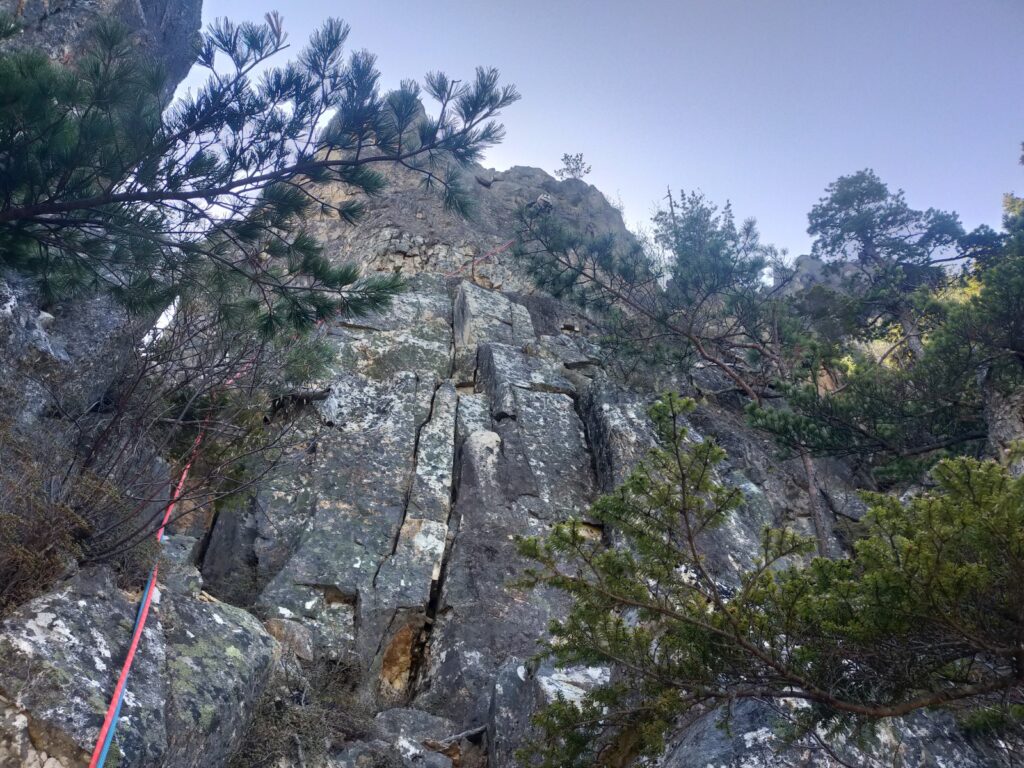
The fifth and sixth pitches—ridge walking and forested sections (5.4)—provided quiet time to maintain climbing pace while resting the body.
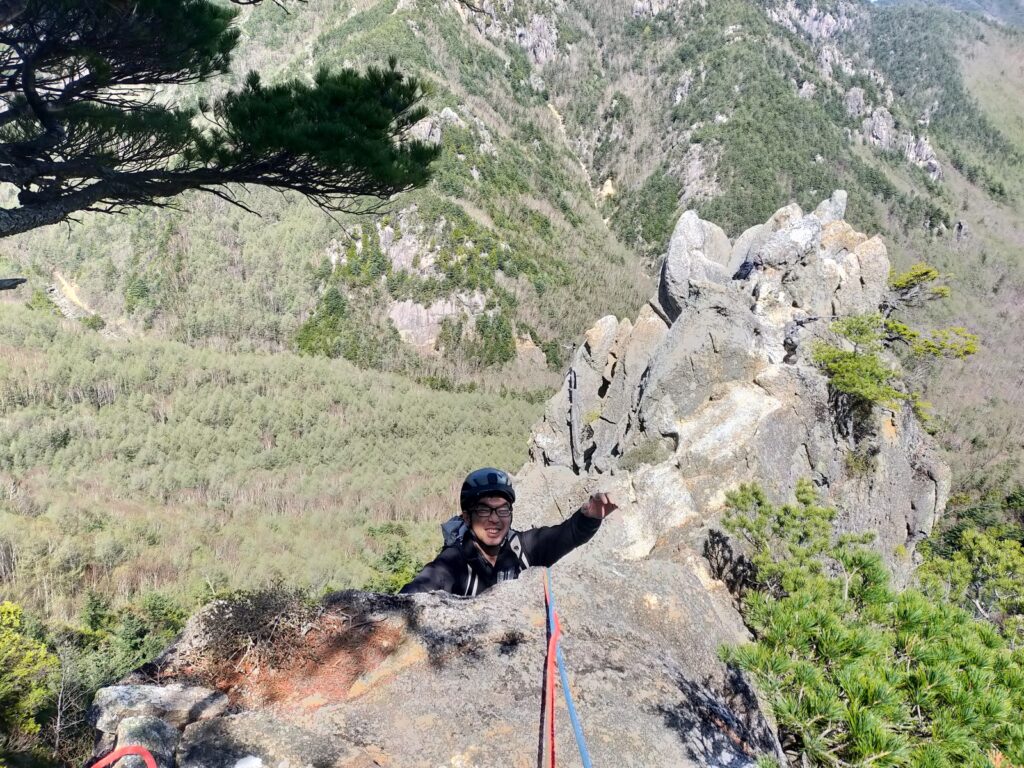
However, from the seventh pitch onward, the ridge’s rock bared its fangs once more.
After climbing the arête on the eighth pitch (5.5), the view suddenly opened, taking my breath away. Below spread a valley of deep green, and I realized how rapidly we’d gained elevation. This sense of liberation is a privilege reserved for climbers, injecting fresh vitality into my increasingly fatigued body.
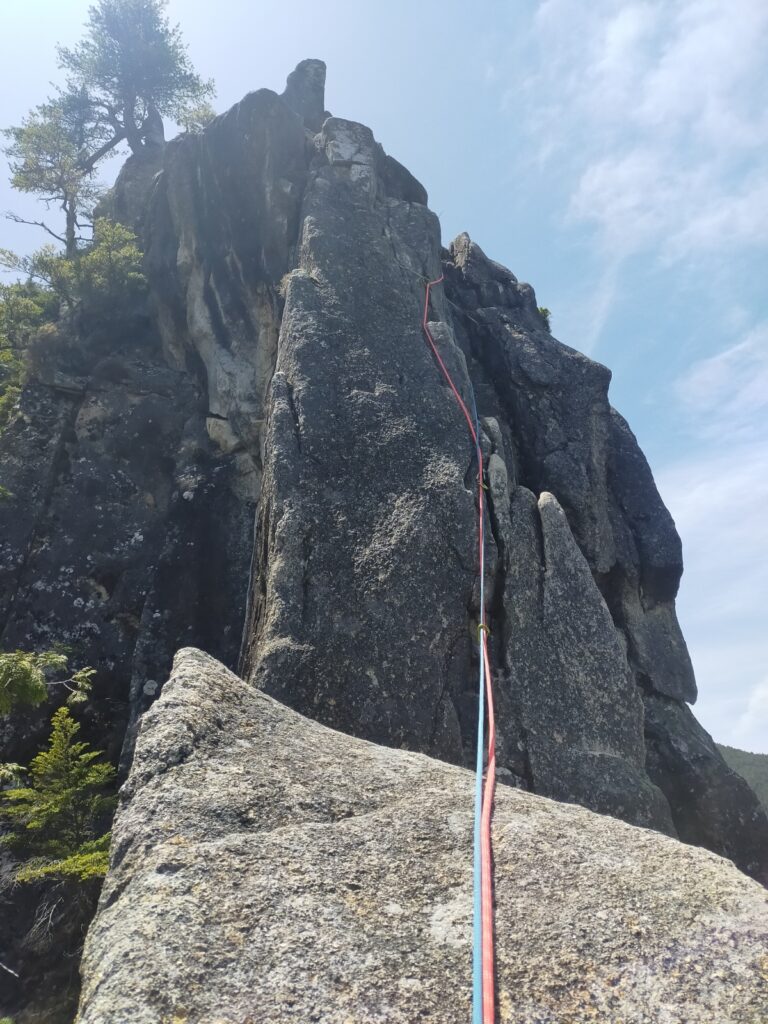
The Fearful Traverse and Rest
The ninth pitch (5.7) connected a chimney to an arête. It passed more easily than it looked, but what most frayed my nerves was the tenth pitch’s (5.6) traverse.
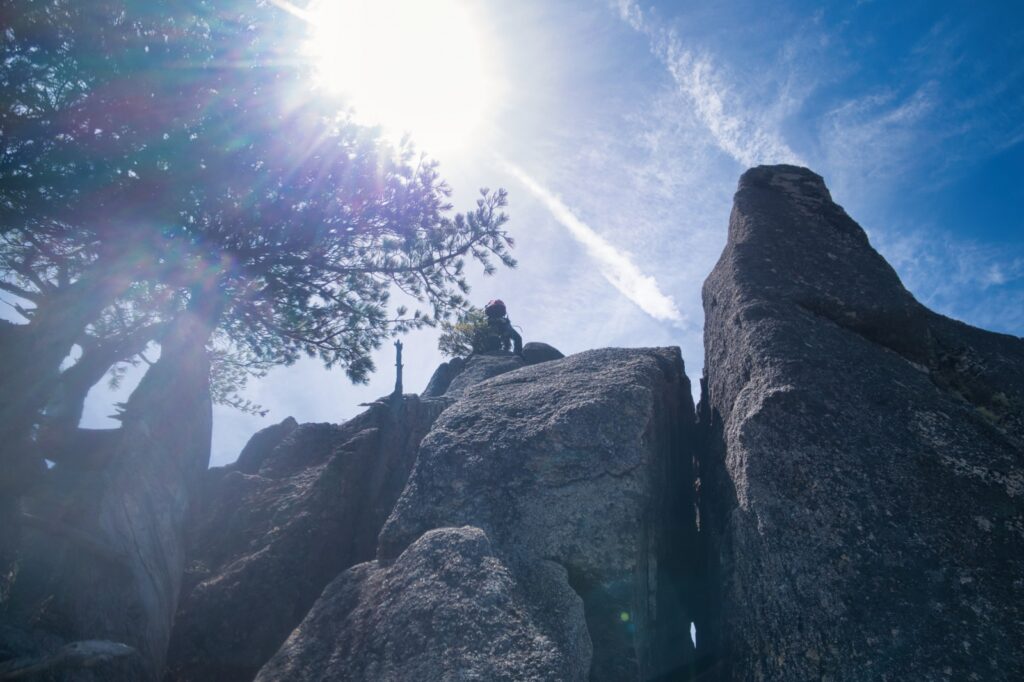
This traverse required crouching carefully across rock with a sharp drop on the left side. While placing intermediate protection in the right-side crack, the sequence of movements—though not technically difficult—planted deep psychological fear. I trusted the rock beneath my feet and overcame this not by suppressing the fear, but by accepting it calmly.
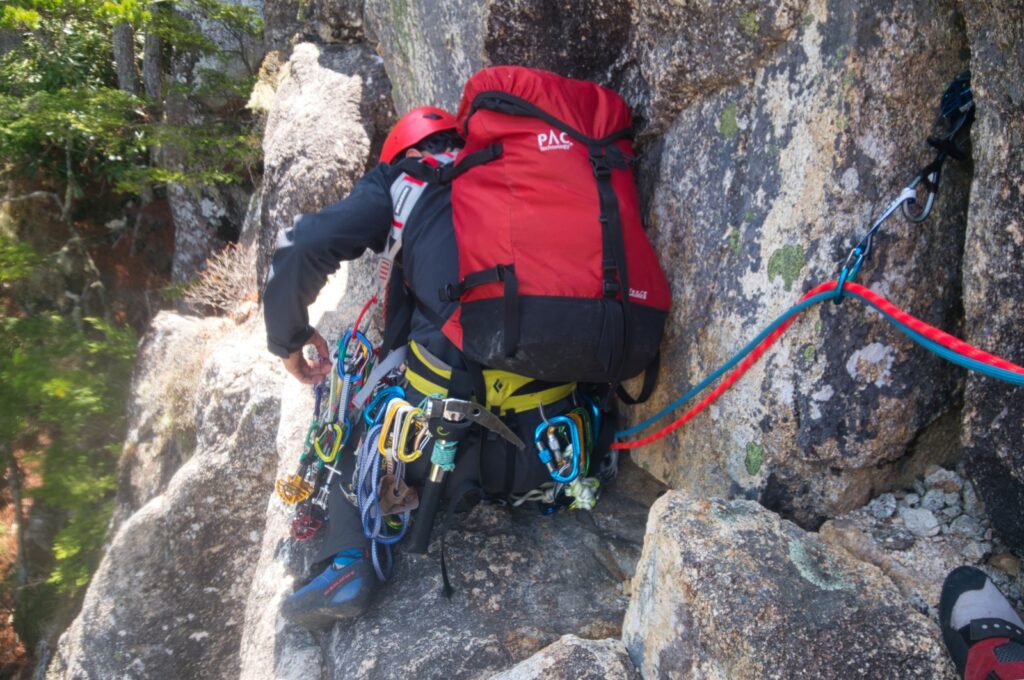
Finding a ledge on the ridge, we ate lunch. This brief rest was essential for refocusing on the afternoon’s crux sections. Below, I could see the Gama Route we would later follow, cutting deeply into the rock. Encouraging the party ahead to continue, I took a short moment of introspection.
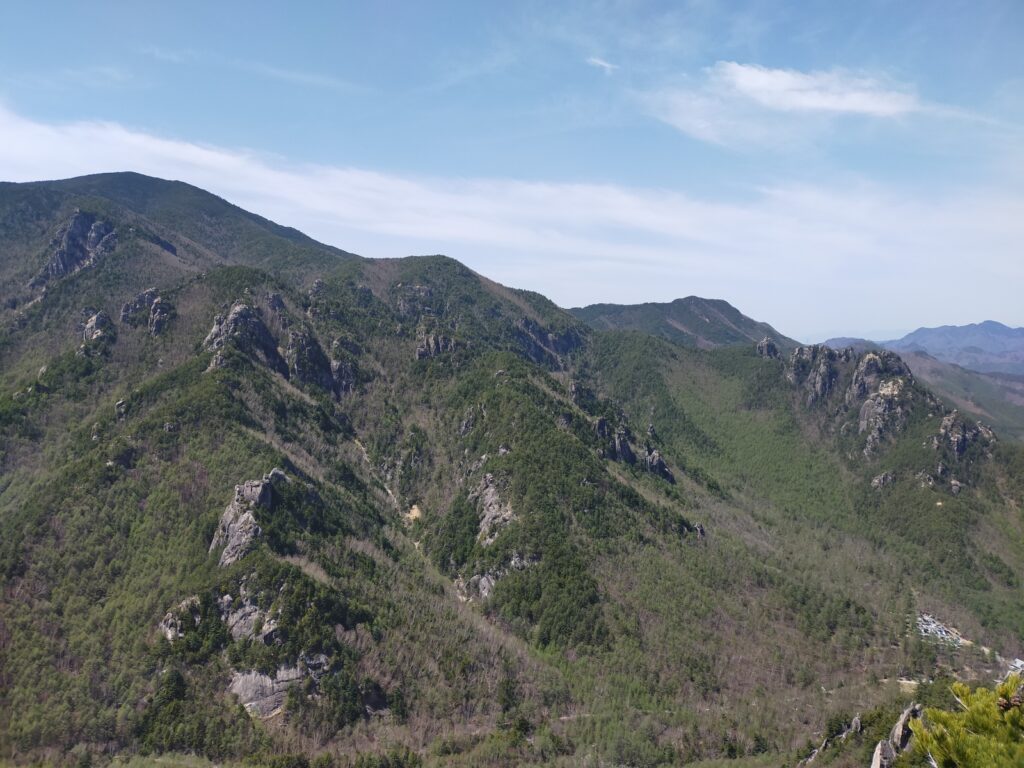
Part III: Summit Joy and the Decision to Descend
The Joy of Hand Cracks
Entering the afternoon, the route climbed toward its climax once more. The eleventh pitch (5.6), called Ni-no-Tate (Second Shield), was a photogenic, walkable ridge. And the thirteenth pitch (5.7)—where the party ahead had spent considerable time—was one of this route’s highlights.
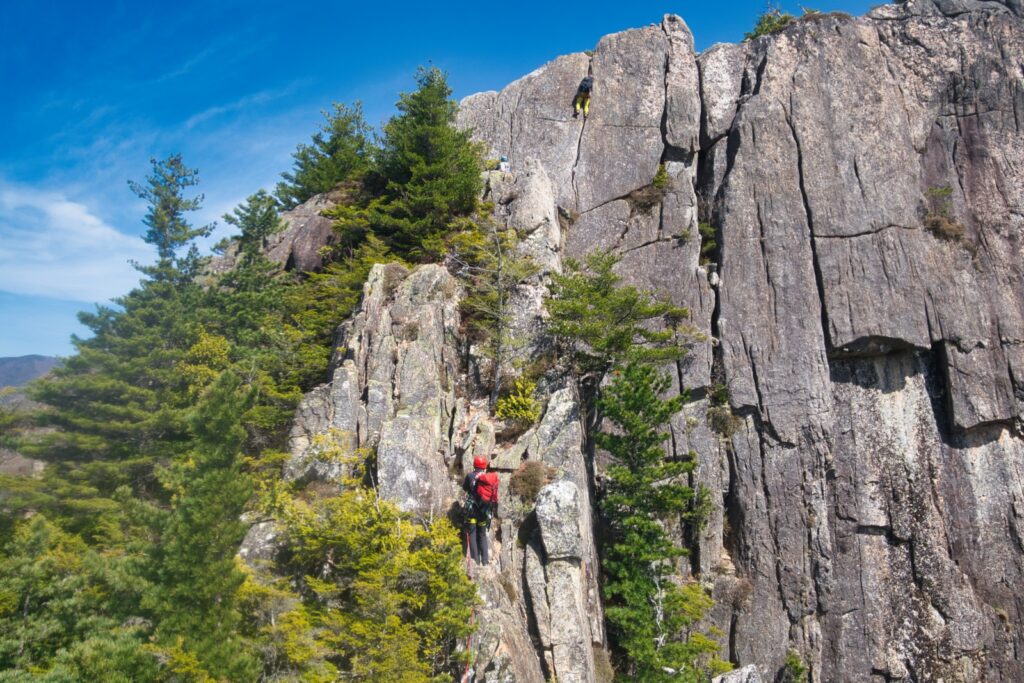
It was a magnificent hand crack. A route testing climbing technique and cam knowledge, where I precisely set cams from size 0.5 to 2, experiencing unity with the rock as I climbed. Despite its stern appearance, handholds were abundant. The granite offered the secure fixing sensation of jamming, where fist and rock become one—deepening the joy of climbing. Upon reaching the final point, San-no-Tate (Third Shield / Eboshi Rock Main Peak), physical exhaustion had reached its limit, but an even greater pure climber’s joy filled my entire being.
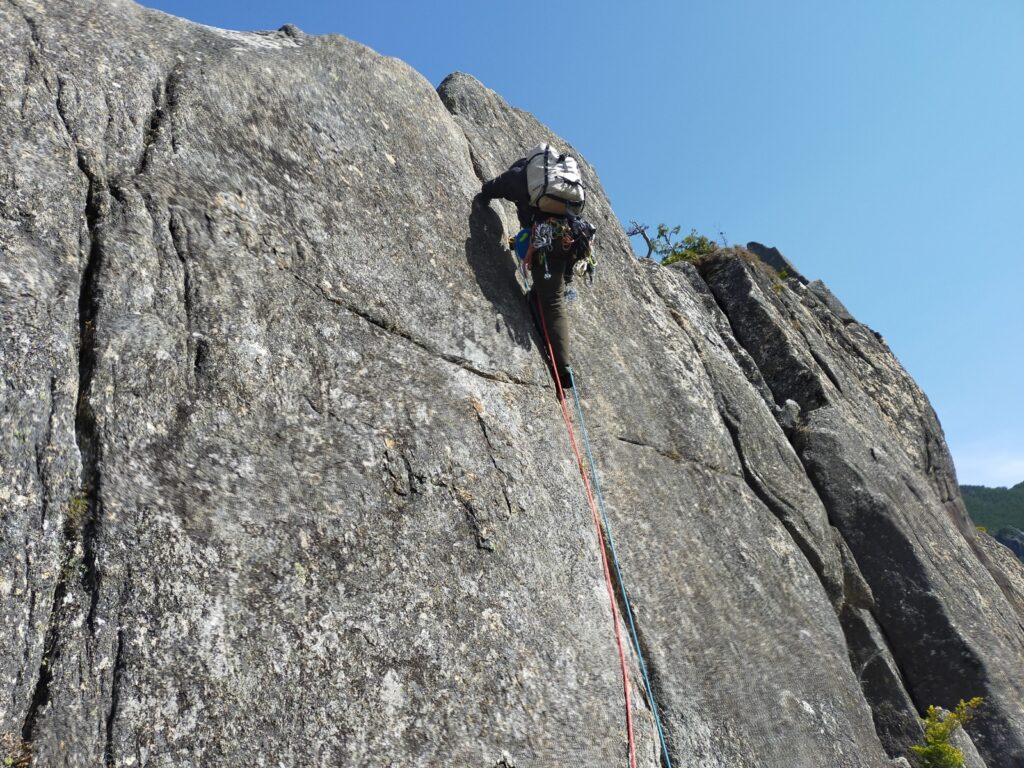
The Decision to Retreat
Just below the summit, we faced our final challenge: rappelling. Witnessing the confusion caused by the party ahead’s incorrect rappel location, I felt time slipping away. Their error cost us precious time, but safe descent had to be our top priority.
Ultimately, judging we’d run out of time, we chose a ten-meter rappel leading to an escape route. This decision to retreat is the most important judgment in climbing. Rather than clinging to reaching the summit, returning safely matters most. This is the only vow I make to the mountain.
Following the clear trail down, we returned to the campground at 5:30 PM. Next time, we will certainly challenge the wide crack and chimney we passed up today.
Ogawayama, called Japan’s Yosemite, and its Eboshi Rock Left Ridge proved a long ascent testing technique, stamina, and above all, judgment. The reliable feel of granite and the overwhelming liberation the ridge provides are pure joys only climbers can taste. This climb became an opportunity to deeply understand both personal capability and nature’s constraints, and including the crucial decision to retreat, it provided solid nourishment for future challenges. This rock wall has built the foundation of our climbing.
LOG SUMMARY
- Date: May 5, 2023 (Friday)
- Team: 2 members (Myself, W)
- Mountain Area: Ogawayama (Mawarime-daira Campground start/finish)
- Route: Mawarime-daira Campground → Eboshi Rock Left Ridge (Pitches 1-14) → Escape Route → Mawarime-daira Campground
- Activity Time: Approximately 11 hours 30 minutes (5:58 AM – 5:30 PM)
- Accommodation: Tent camping at Mawarime-daira Campground
- Weather: Clear
- Grade: Multi-pitch trad climbing, 14 pitches total (5.4-5.8, based on Japanese Alpine Club standard)
- Special Notes:
- All 14 pitches completed
- Traditional (trad) multi-pitch climbing
- Rappel error at final section led to escape route
- Technical hand crack climbing with cam placements (sizes 0.5-2)
